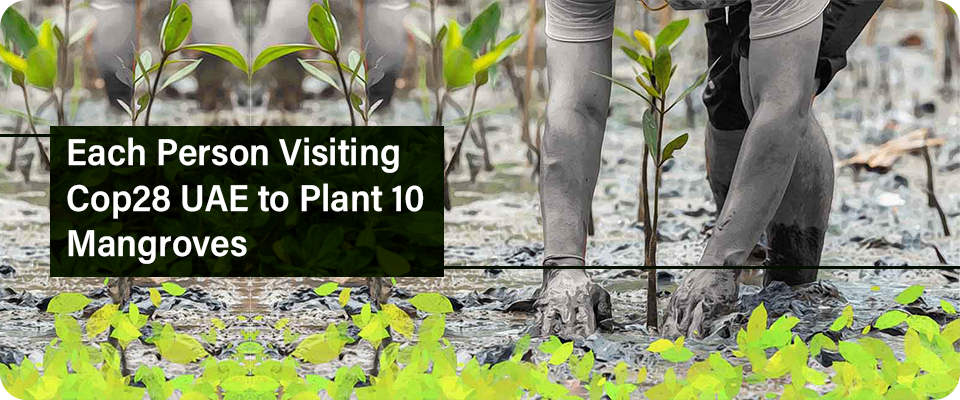
UAE to Plant 10 Mangroves for Each Person Participating COP28
The COP28, UN Climate Conference has taken a further step to make UAE more greener. The authority has announced that each person going to participate in the COP28 climate change summit will plant 10 mangrove trees this year.
COP28, which is going to be held from 30th November to 12th December, is ready to welcome 80,000 visitors from different parts of the globe for the conference talk, which means by the end of the summit The United Arab Emirates will look more greener with the planted 800,000 mangrove trees in Abu Dhabi.
The Environment Agency of Abu Dhabi has undertaken this initiative to plant mangrove trees during the last quarter of this year using the latest drone technology.
The mangroves will cover the coastal areas like Al Mirfa City, Jubail Island, and Marine Biosphere Reserve during the winter season this year, which is also called as “optimal period”, and the ideal time to grow the planted trees in coastal areas.
The main motto behind the initiative is to adapt the climate change by following natural methods. It will also reduce the environmental footprint of the attendees of the conference, with a rate of consuming one tonne of carbon by each 5000 mangrove plant.
Dr. Shaikha Salem Al Dhaheri, secretary-general of EAD said, “This initiative also highlights the UAE’s commitment to achieving climate neutrality and promoting nature-based solutions to reduce the effects and adapt to climate change and reduce the environmental footprint of conference visitors, at the rate of absorbing one tonne of carbon for every 5,000 mangrove trees.”
The initiative, Ghars Al Emarat will also work as a platform to develop innovative solutions for the conservation of mangroves, on growing awareness of climate change mitigation, and the importance of grasping the climate change in the country.
There are dozens of mangrove areas and the capital of the United Arab Emirates is the home of almost 85% of mangroves around the country.
Dr. Shaikha Salem Al Dhaheri has said this initiative will support the goal of planting 100+ million mangroves across the country by 2030.
Mangroves are known as ideal for maintaining the best ecosystem in the coastal areas in the world, they equally provide economic, and ecological solutions. They also help to reduce the harmful effects of climate change by absorbing greenhouse gases, and mitigating and isolating carbon.
Mangroves in the United Arab Emirates could influence a greater range of biodiversity, and increase and protect the seagrass beds and the range of living coral reefs from sedimentation. It will also improve the water quality and bolster more ecotourism activities in the country.
“Building a resilient, net-zero future depends on halting nature loss and restoring our natural ecosystems. Nature-based solutions, including those involving mangroves, have the potential to supply over a third of our climate mitigation needs and build resilience to the effects of climate change. I welcome this EAD-led initiative which both raises awareness and takes action to restore and protect mangroves in the UAE,” said Razan Al Mubarak, UN Climate Change High-Level Champion for Cop28.
In Ajman, Al Zorah City also has a plan to double up the number of mangroves in the mangrove reserve naturally by planting hundreds of thousands of trees within the next year.
During a press release Sheikh Rashid bin Humaid Al Nuaimi, chairman of the Al Zorah City board of directors said, “Al Zorah Mangrove Natural Reserve is a treasured part of our community in Ajman, We are pleased to announce our initiative for 2023, which strives to increase our green footprint in the Emirate and support the UAE in its long-term sustainability targets and the upcoming highly anticipated Cop28.”
The ‘Ghars Al Emarat’ initiative, launched on Tuesday, September 5 is paired up with the commitment by Al Zorah City. It is a combined venture between Solidere International PLC, a top-rated real estate developing company in the Emirates, and Ajman government
Al Zorah City is a location of more than 500,000 mangrove trees which is the reason behind the production of millions litters of oxyzen on a daily basis. The mangrove reserve is spread over more than one million square meters and provides shelter for more than 200 different species and traveller birds.

 Previous Article
Previous Article